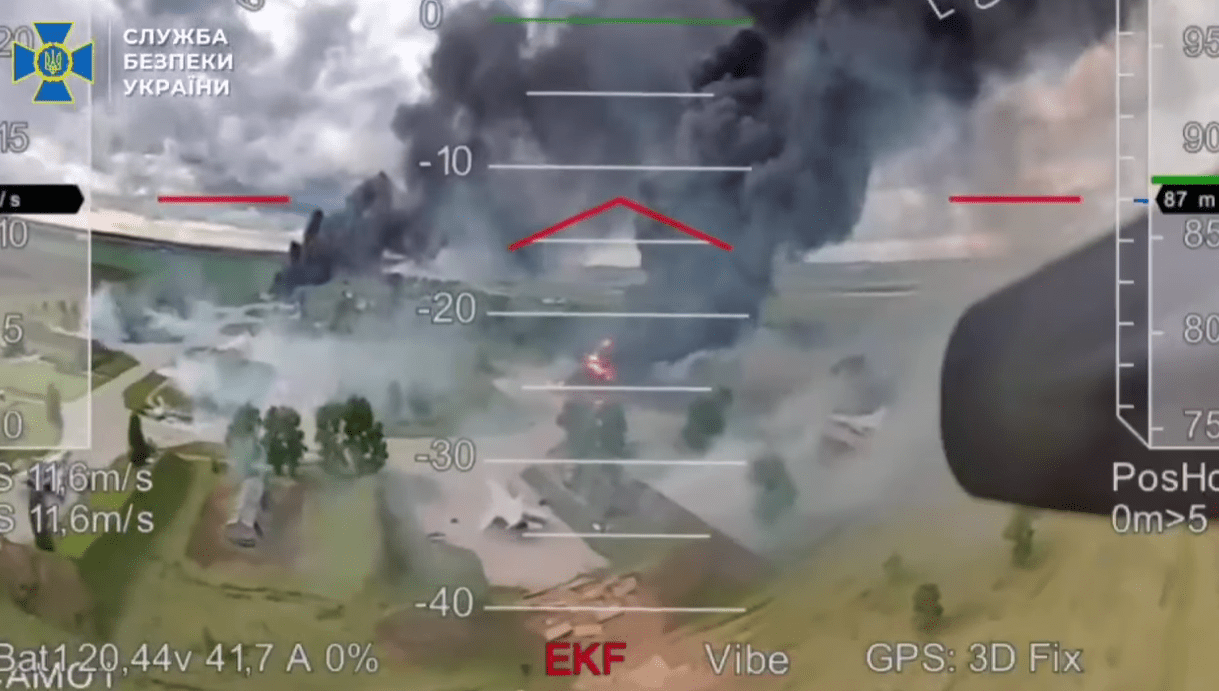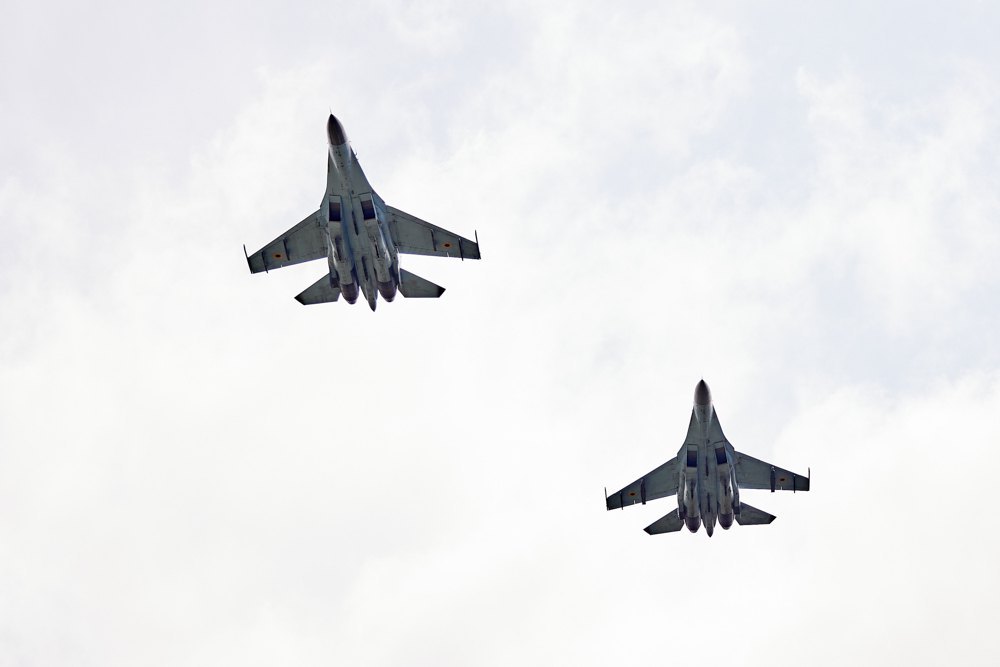“An operation of this scale is a completely new story – it has never happened before. It is unlikely to happen again.”
Olena Huseynova: The SBU’s special operation Spider’s Web – what does it mean to you from a professional perspective? What have you noticed that perhaps we have overlooked in our excitement?
Aristokrat: An operation of this scale is a completely new story – it has never happened before. It is unlikely to happen again, because the enemy will most likely take certain measures, as they always do after such setbacks.
Operations of this magnitude require substantial resources and coordination. Primarily because it is significantly more difficult to control such an extended range compared to what we typically operate within.
Serhiy Zhadan: You suggest this cannot be repeated – are you certain? Recall the example of Chornobayivka, where the Russians persistently brought their equipment to the same location and continued to lose it. Or consider the case of the Crimean Bridge, now struck for a third time, and still they have failed to protect it. Perhaps in this case we are overestimating the enemy slightly – and are, as usual, intimidated by the narrative that their air defence system is impenetrable. Yet, experience has shown that such defences can, in fact, be breached.
Aristokrat: It will take the Russians a considerable amount of time to develop effective countermeasures, as they still rely on large airfields. Even constructing basic protective shelters is time-consuming. They must also implement electronic warfare (EW) countermeasures, which involves identifying the correct frequencies and timing – knowing precisely when to activate or deactivate systems to avoid causing self-interference. In this case, the SBU operated for merely 10–15 minutes, yet any broader or prolonged EW response would risk disrupting their own defences.
Moreover, such countermeasures demand substantial resources. Electronic warfare is not simply a matter of pressing a button – it requires a steady supply of fuel and electricity, and the necessary equipment is prone to breakdowns and malfunctions. Importantly, all these components must be scalable. As experience shows, when a facility remains inactive for months, someone eventually forgets to switch something off, or critical systems fail through neglect.
The situation in Chornobayivka was, to some extent, different – it was less publicised. The Russian side attempted to conceal it, and there was limited media coverage or widely circulated footage. Nevertheless, we were aware of the situation, and local residents knew it was ongoing. However, when the blow is this direct and visible, the enemy tends to learn more actively.

Olena Huseynova: The Washington Post reported that Operation Spider’s Web marks a turning point in the history of warfare. According to their assessment, nothing will be the same – this event demonstrates that drones are capable of defeating aircraft. I would be interested in your reaction to that statement. Do you agree that it represents a turning point?
Anatoliy Khrapchynskyy: Let us begin with the observation that Ukraine has, in effect, set a new global trend in drone technology. The entire world has been moving towards removing pilots from aircraft – take, for example, the development of the F-35 as a potential unmanned system. Ukraine has significantly reduced the scale of strike drones, thanks to an integrated approach whereby 10–15 small drones can be launched simultaneously against a single target. This creates an effective substitute for large aircraft using compact systems that can still be operated by pilots.
The SBU’s operation represents a breach in the security architecture of any modern state. That is what must be acknowledged – and that is precisely where all nations now need to begin preparing.
“Every war generates new weapons, leaving behind those previously relied upon”
Serhiy Zhadan: We recently spoke with Oleksandr Kamyshin, Strategic Advisor to the President, who noted – among other things – the emergence of drones designed to intercept and destroy other drones. Are unmanned aerial vehicles truly becoming the primary weapon of this war?
Anatoliy Khrapchynskyy: Absolutely. Drones currently represent a low-cost but highly effective weapon under rapid development. However, over time, their cost will inevitably increase. This is due to the growing desire to equip them with thermal imaging cameras, artificial intelligence, and a variety of destructive payloads. These enhancements will raise the cost of the individual platform, but they also reflect a fundamentally new approach to the use of weaponry.
Serhiy Zhadan: Indeed, if we examine the defence production efforts of both Ukraine and Russia, it becomes evident that priorities are shifting. Investing in military defence today no longer necessarily means tanks or large aircraft. These are more expensive, more resource-intensive, and more time-consuming to manufacture than drones. Ukraine also faces the additional challenge of security when scaling industrial production. Does this reflect the military economy of the future?
Anatoliy Khrapchynskyy: Following the Second World War, many expected that tanks and artillery would become obsolete, to be replaced by precision-guided munitions such as cruise missiles. Yet history shows that every war gives rise to new weapons while leaving behind older ones. For instance, rifles and automatic firearms are still in widespread use on the front lines.

The development of new weapons systems expands our capabilities and alters tactical doctrines. Crucially, success on the battlefield lies in the integrated use of diverse weapon types. No single category of armament is sufficient in isolation – it is the synergy between them that matters.
Serhiy Zhadan: Since the beginning of the full-scale war, Ukraine has relied heavily on Western weapons and equipment. One of the most eagerly awaited systems was the F-16 fighter jet. These aircraft were widely regarded as a potential turning point. Now that they have arrived, do you believe those expectations were justified, or were they exaggerated from the start?

Anatoliy Khrapchynskyy: The arrival of the F-16s is certainly significant, but expectations must be tempered. What we have not received from our Western partners are long-range AGM-158 JASSM missiles, for example. Nor have we been provided with the LINK-16 data exchange system or airborne early warning and control aircraft that could support and direct these jets.
This brings us back to the principle that no single weapon system guarantees success. Effective warfare relies on a combination of tools and technologies.
Interestingly, many European partners express readiness to purchase Ukrainian-made weapons – provided they conform to NATO or EU standards and doctrines. But when I ask whether modern warfare as practised today adheres to those standards, there is rarely a clear answer. What they do understand is that Ukraine has introduced a fundamentally new tone and approach to warfare.
Undoubtedly, the SBU’s recent operation marks a tactical turning point in this war. But we must also remember that we are fighting a terrorist state – and a terrorist, when cornered, will always attempt to inflict maximum damage until the very end.
The potential of FPV technology remains largely untapped
Olena Huseynova: Drone technology is advancing so rapidly that we are no longer constrained by existing standards – in fact, we are setting them ourselves. What, then, are the future possibilities for FPV drones, particularly in the realm of intelligence gathering?
Aristokrat: The potential of FPV drones is far from being fully realised. We are only at the beginning of their deployment, testing and practical application. Some operations are successful, others less so, and we are now exploring entirely new types of tasks. At the brigade level, this potential is being uncovered daily.

Our primary objective is to keep the enemy’s infantry at a distance from our own – to protect our soldiers. For us, it is already a kind of defeat when the enemy engages us in close combat. This does not necessarily mean the loss of personnel, equipment or positions, but the very fact of direct contact signifies a tactical failure.
Naturally, FPV drones will not replace tanks, aircraft, artillery or infantry. Aircraft can deliver significantly larger payloads, and artillery can strike targets more quickly – whereas we may need between five and fifteen minutes to cover the same distance. However, FPVs enhance intelligence-gathering capabilities in a qualitative way. Previously, reconnaissance involved physically entering the field, moving through terrain, observing and returning – all at great personal risk. Now, we can deploy five to ten drones for round-the-clock surveillance. We are able to detect every minute movement – where the enemy emerges from, where they retreat to, and which routes they use. This enables us to observe, analyse, and act accordingly.
Anatoliy Khrapchynskyy: As someone involved in the development of electronic warfare equipment and various types of interceptor drones, I would add that the analytics provided by the military are instrumental in helping us build better systems. However, we now have a large number of manufacturers, and we must align our objectives.
There is a clear need for unification. We should not be differentiating between circuit boards, drone frames, communication systems or cameras. Standardisation would significantly increase efficiency. Soldiers on the front line should be able to assemble the necessary components for their mission without having to modify existing systems that were built to other specifications and may not be functional in current combat conditions.
For this reason, I fully support Ms Mariya Berlinska’s proposal to establish a dedicated engineering liaison within the military’s analytical division. It is time to conduct a comprehensive review of all weaponry currently in use on the contact line. This would enable us to generate precise technical specifications for manufacturers and deepen our understanding of the military’s operational needs – particularly in determining the types and quantities of drones required for specific missions. In doing so, we will enhance our tactical capabilities and accelerate innovation on the battlefield.








